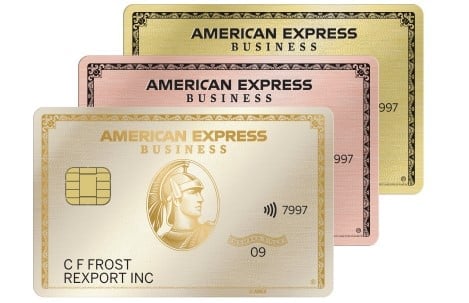SBA Microloans: Overview and How to Apply
SBA microloans can be a good choice for small-business owners who may not qualify for more traditional loan options.
Many, or all, of the products featured on this page are from our advertising partners who compensate us when you take certain actions on our website or click to take an action on their website. However, this does not influence our evaluations. Our opinions are our own. Here is a list of our partners and here's how we make money.
Concerned about tariffs?
Many small-business owners are under increased economic stress and uncertainty following the latest tariff announcements. NerdWallet is here to help you find answers for whatever you're looking for. Here are some resources to help you get started:
Need emergency funding? Consider a business line of credit.
Looking for fast access to working capital? Discover the best working capital loans.
Want tips on how to mitigate the impact of tariffs? Read our guide.
SBA microloans are smaller-sized business loans funded by the U.S. Small Business Administration and issued through its network of intermediary lenders. This SBA loan program is designed to provide financing to traditionally underserved businesses, such as startups, women-owned companies and businesses located in low-income communities.
SBA microloans typically offer competitive interest rates and flexible eligibility requirements, making them a good option for borrowers who can’t qualify for other small-business loans. Many microloan lenders also provide training and other educational resources for business owners.
How much do you need?
We’ll start with a brief questionnaire to better understand the unique needs of your business.
Once we uncover your personalized matches, our team will consult you on the process moving forward.
What is an SBA microloan?
An SBA microloan provides financing of up to $50,000 for small businesses to manage and grow their operations. Although these loans are funded by the SBA, they’re processed, distributed and administered by approved intermediaries, typically nonprofit and community lenders. In this way, SBA microloans differ from SBA 7(a) and 504 loans, which are funded by participating lenders (like banks and credit unions) and partially guaranteed by the SBA.
SBA microloans can be used for working capital or to purchase inventory, supplies, furniture, fixtures, machinery or equipment. You can't use one of these microloans to pay off existing debts or purchase real estate, however.
SBA microloan features
SBA microloan rates, fees, repayment terms and loan amounts vary based on the lender. Lenders are, however, subject to certain restrictions (e.g. $50,000 maximum loan amount) as laid out by the SBA.
Loan type | Term loan. Microloans cannot be made as lines of credit. |
Loan amount | Up to $50,000. The average SBA microloan amount in fiscal year 2024 was $16,124. |
Repayment terms | Up to seven years. |
Interest rates | Rates vary, but typically range from 8% to 13%. |
Fees | Up to 3% of the loan amount (up to 2% for loans with terms of less than one year) plus closing costs determined by the lender. |
Funding speed | Varies based on the lender. Can take anywhere from a week to 30 or more days to receive funding. |
SBA microlenders typically require collateral to secure the loan against nonpayment. If you take out a microloan to purchase equipment, that equipment will serve as collateral for the loan. In most cases, you’ll also need to sign an SBA loan personal guarantee stating you will repay the financing.
SBA microloan pros and cons
Can be used for a variety of funding purposes.
Designed to finance traditionally underserved businesses.
Startups and business owners with bad credit may be able to qualify.
Competitive interest rates, low fees and long repayment terms.
Intermediaries typically offer business training and educational resources.
Loan amounts max out at $50,000.
Can’t be used to pay existing debt or purchase real estate.
Collateral is likely required.
Slow funding timeline.
SBA microloan requirements
The SBA microloan program is targeted to startups and early-stage businesses — 24% of microloans issued in fiscal year 2024 went to startups (businesses in operation for two years or fewer — but it's open to all for-profit small businesses and certain nonprofit child care centers.
Unlike many traditional loans, SBA microloans are available to small-business owners with no credit history, as well as lower incomes. The program is also geared toward businesses otherwise underserved by traditional banks, including women- and minority-owned businesses and those in low-income communities.
Eligibility requirements beyond these overall guidelines will vary by lender. In general, however, lenders may consider criteria such as:
Minimum credit score. It’s usually good to have a credit score of 620 or higher, although some SBA lenders will accept lower scores.
Time in business. Certain lenders will work with brand new businesses whereas others may require two years in operation.
Location. Many microlenders only service a particular community or region. You may need to prove that your business is located in an eligible area.
Personal finances. You may need to be able to show that you haven’t had any recent bankruptcies, that you aren’t behind on tax payments and that you don’t have any current liens against you.
Business finances. Lenders may want to see a positive cash flow or positive cash flow projections.
Collateral. Many SBA microlenders will require you to secure your loan with collateral.
» MORE: How to qualify for an SBA loan
How to get an SBA microloan
To get an SBA microloan, you’ll need to find and apply through an SBA-approved intermediary lender. These lenders are typically nonprofit and community-based organizations.
Justine Peterson, for example, is a not-for-profit that serves Missouri and eastern Kansas, as well as southern and central Illinois — offering SBA microloans, among other products. This organization issued $3.7 million in SBA microloans during fiscal year 2024, the most of any intermediary lender.
The SBA maintains a list of active intermediaries on its website and allows you to sort through it by state. The best SBA microlender will be the one that you can qualify for with the most competitive interest rate. You’ll want to research and compare several lenders in order to find the right one for your needs.
How to apply for an SBA microloan
The SBA microloan application process will vary from lender to lender, but you can expect to need some, if not all, of the following documents:
Personal identification.
Business license and any operating agreement.
Business plan.
Personal tax returns (at least two years).
Recent pay stubs.
Business tax returns.
Balance sheet and income statement.
Cash flow projections.
Business lease and contracts.
List of collateral and current business assets.
Existing debt schedule, if applicable.
Once you submit the application, your lender will review it and work with you to complete the underwriting process. If you’re approved, your funds will be distributed after you sign a business loan agreement.
Because SBA microloans are managed entirely by intermediary lenders, the SBA does not have to approve your application.
Want to explore other funding options?
Business loans for bad credit can help you access capital if you’re facing personal credit challenges, and help you build your credit.
Online business loans can offer fast financing and more flexible qualification requirements than traditional loans.
Business lines of credit offer revolving funding, which means you don’t have to take the full amount you’re approved for.






